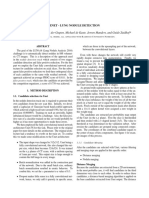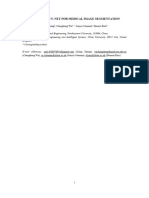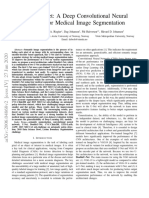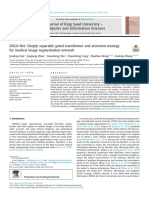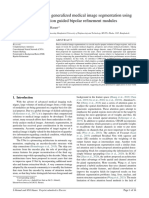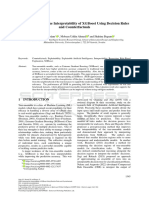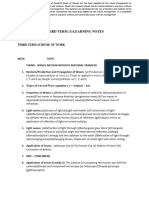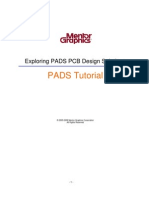0% found this document useful (0 votes)
34 views7 pagesImage Segmentation Based On Improved Unet
The document presents a study that proposes an improved Unet network for liver image segmentation. The improved network adds compression extraction modules and full-scale connection blocks to strengthen the ability to extract features and tumor edge information from medical images. The network is tested on 25 liver images from an online dataset, with 20 images used for training and 5 for testing. Results show the improved network architecture achieves higher segmentation accuracy compared to standard networks like Unet and AttenUnet.
Uploaded by
ZAHRA FASKACopyright
© © All Rights Reserved
We take content rights seriously. If you suspect this is your content, claim it here.
Available Formats
Download as PDF, TXT or read online on Scribd
0% found this document useful (0 votes)
34 views7 pagesImage Segmentation Based On Improved Unet
The document presents a study that proposes an improved Unet network for liver image segmentation. The improved network adds compression extraction modules and full-scale connection blocks to strengthen the ability to extract features and tumor edge information from medical images. The network is tested on 25 liver images from an online dataset, with 20 images used for training and 5 for testing. Results show the improved network architecture achieves higher segmentation accuracy compared to standard networks like Unet and AttenUnet.
Uploaded by
ZAHRA FASKACopyright
© © All Rights Reserved
We take content rights seriously. If you suspect this is your content, claim it here.
Available Formats
Download as PDF, TXT or read online on Scribd
/ 7
